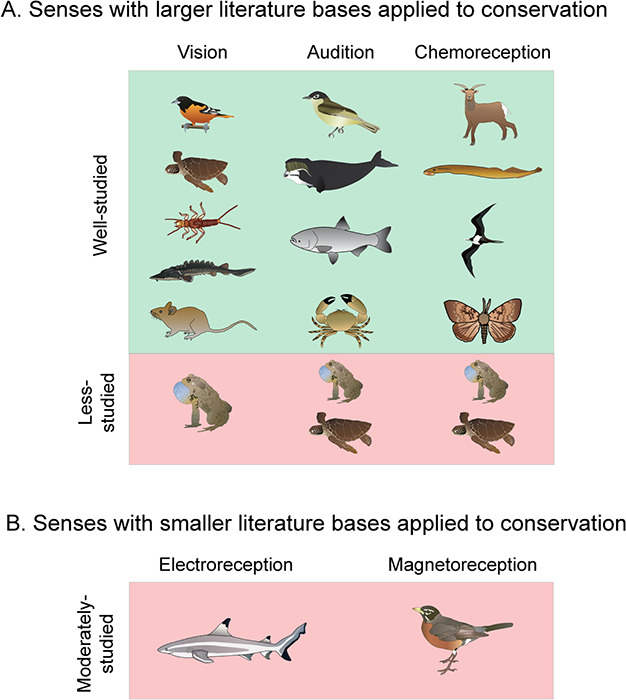Figure 1.

This figure provides a visual representation of taxa with known case studies demonstrating the application of sensory ecology to benefit wildlife conservation and management. Animals are categorized into six taxa: birds, mammals, invertebrates, fish, reptiles or amphibians. Each of these taxa is visually represented in the figure by a species from that taxon for which there has been a notable research demonstrating strong benefits of the integration of sensory ecology with conservation. Part (A) represents the three common senses, vision, audition and chemoreception, for which there is a larger amount of literature linking sensory ecology and conservation. Each of the six taxa specified by this paper are here categorized as either ‘well studied’ or ‘less studied’ depending on the presence or absence, respectively, of known literature linking sensory ecology to the conservation of species (or multiple species) of that taxon. Part (B) represents two sensory modalities, electroreception and magnetoreception, which have considerably smaller literature bases linking sensory ecology to conservation. However, we do note a single case study for each of these sensory modalities for which sensory ecology has benefited conservation of a species. Select Images by S. Bell, J. Hawkey, L. Fishman, K. Kraeer, and T. Saxby, courtesy of the Integration and Application Network, University of Maryland Center for Environmental Science (ian.umces.edu/symbols/).
